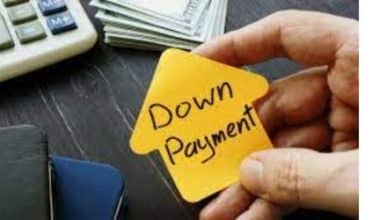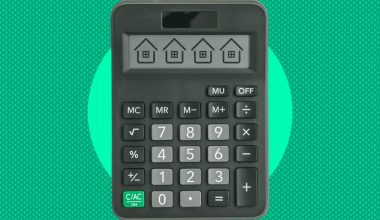Do you want to buy a property but don’t have enough money to do so? You’re not the only one in this category. Research proves that only a few people have enough cash on hand to purchase a home. That’s why banks and some other firms offer loans in terms of mortgages that give customers the difference between the price of the home they want and the cash they have at hand. This article is a guide on how you can get prequalification for a mortgage using the guidelines from Chase. You’ll also learn how to use the mortgage prequalification calculator, and how it affects your credit score. In addition, and most importantly, we’ll compare the mortgage prequalification vs mortgage preapproval.
What Is Mortgage Prequalification?
A mortgage prequalification means that a mortgage lender has gathered some basic financial information about you and, in some cases, done a credit check in order to estimate how much house you can afford.
To prequalify for a mortgage, you’ll need to submit the lender with certain financial information. Such information includes your income, any debt you have, and basic information about your bank accounts. You’ll almost certainly need to tell the lender how much you hope to borrow, as well as how much you intend to give toward a down payment. If you’ve had a bankruptcy or foreclosure, expect to be asked about it as well. Depending on the type of loan, you may need to wait some time before being eligible for a mortgage.
It’s a simple process with facts you probably already know off the top of your head.
“Prequalification is the first step in securing finance,” Will Reynolds, a real estate agent in Nashville, Tennessee, explains. “This is not a loan guarantee; it is simply the first, but crucial, step in the process.”
After you have received a loan preapproval and your offer on a property has been accepted, you will apply for the actual mortgage.
Mortgage Prequalification vs Mortgage Preapproval
Rather than checking documentation as with a preapproval, lenders often take you at your word regarding your financial status for a prequalification. A prequalification can help you determine what you can afford, but it does not guarantee approval. Here are the significant distinctions:
What You Must Submit
Mortgage Prequalification: Basic financial information such as how much you make, how much you want to borrow, and how much you want to put down. A credit check may be required in some situations.
Mortgage Preapproval: A thorough examination of your income, debt, bank accounts, tax returns, and credit history.
How Long It Takes
Mortgage Prequalification: Very quick — only a couple of minutes
Mortgage Preapproval: Most lenders take longer — in some cases, 10 days — whereas several online lenders offer preapprovals in a matter of minutes.
Why It Is Significant
Mortgage Prequalification: You’ll know exactly what you can afford.
Mortgage Preapproval: You’ll have proof that you’re a serious buyer with financing in place.
While these two phrases may sound similar, a preapproval normally carries more weight and provides more information about the loan you’ll be approved for. And in today’s market, you’ll need a preapproval letter in hand before even considering placing an offer on a home.
A prequalification, on the other hand, can assist you to identify what price range of homes you should be looking at. And most times, it is free. When you are serious about purchasing a property, the preapproval letter provides additional specific assurance that you can close the sale. From the seller’s point of view, they want a preapproval, not a prequalification.
Preapproval usually takes longer than prequalification since the lender requires considerably more documentation. A lender will look at your debt, tax records, and a variety of other factors to determine your ability to repay the loan.
Chase Guidelines On Getting Mortgage Prequalification
Chase has outlined some guidelines for getting a mortgage prequalification. They are as follows:
#1. Examine your credit score
The first step is to analyze your credit report and obtain your credit score. Check with your bank or credit card company, as they frequently supply these for free. Furthermore, Equifax, Experian, and TransUnion are mandated to offer you one free credit report every year.
You can obtain a report by visiting annualcreditreport.com or contacting the credit reporting bureaus. If you plan to buy a house with your spouse or another person, they must also request and evaluate their credit reports. Examine your credit reports for errors, and if you find any, contact the credit reporting agency to request a correction.
Examine your credit score, which ranges from 300 to 850. A higher score not only increases your chances of securing a mortgage loan, but it may also qualify you for a reduced interest rate.
Don’t wait until you’ve discovered the perfect property to look for a mortgage. This will allow you to improve your credit score by evaluating your credit report for accuracy, paying your bills on time, and lowering your credit account balances.
#2. Understand Your Debt-to-Income Ratio.
All of your monthly payments on present and prospective obligations should be less than 43% of your monthly income. The amount you qualify for based on this computation, however, may not be right for you. To determine how much you can comfortably pay, you should examine your unique position and consult with a financial expert. During the application process, we will check your income. Divide your monthly payments by your monthly gross income to obtain your debt-to-income ratio.
To calculate your debt-to-income ratio, use the following formula: Debt-to-income ratio (A/B):
A represents your total monthly payments (such as credit cards, student loans, car loans or leases; also include an estimated mortgage payment).
B represents your monthly gross income on average (divide your annual salary by 12).
If your monthly income is $5,000 and your monthly obligations and anticipated expenses are $1,000, your debt-to-income ratio is 20%.
If your debt-to-income ratio is greater than 43 percent, you may still be able to get a mortgage if another person (such as a spouse, relative, or someone who lives in the home) fills out the application with you. During the application process, we will request information about the co-applicant.
Starting the procedure early may allow you to pay off some credit card bills or smaller loans. Hence, lowering your debt-to-income ratio and thus improving your credit score.
#3. Your initial payment
Putting a larger down payment may result in a lower interest rate and faster equity buildup in your property. If you put less than 20% down on a traditional loan, you must pay private mortgage insurance (PMI), which protects the lender if you stop making payments and default on your loan. PMI costs roughly 1% of your outstanding loan total every year and is applied to your monthly mortgage payment. When your outstanding balance exceeds 80% of the initial loan amount, you can request that PMI be removed.
Some loan types may require a lower down payment, such as a 3% to 5% down payment. The Federal Housing Administration (FHA) requires a 3.5 percent down payment, although the United States Department of Veterans Affairs (VA) may not demand any money down.
#4. Visiting a lender to be pre-qualified
Once you’ve decided you’re ready to buy a home, the next critical step is to find the right mortgage. Talk with many lenders and compare their mortgage interest rates and loan alternatives to ensure you’re getting the best price.
The loan officer will ask for information about your income, job, monthly costs, the amount you have available for a down payment, and potentially some additional information during pre-qualification. They will then offer you an estimate.
#5. Completing your mortgage
After the seller accepts your offer, you can proceed with the mortgage procedure and take possession of your new property. The first step is to pick which lender to use and which form of mortgage is appropriate for you.
You’ll always know what your monthly principal and interest payments will be with a fixed-rate mortgage. Fixed-rate mortgages are available in 10-, 15-, 20-, 25-, and 30-year durations. A variable-rate mortgage (ARM) may have lower initial payments than a fixed-rate mortgage. An ARM has a 30-year term with a fixed interest rate for the first 5, 7, or 10 years (depending on the product) and then becomes variable for the remainder of the loan term, altering every year thereafter.
By selecting a 15-year term over a 30-year term, you can save money on interest over the life of your loan. However, your monthly payment will be greater.
Your lender will request an appraisal to determine whether the home’s purchase price is comparable to comparable residences in the region. The appraiser will inspect the property and compare it to similar homes that have previously been sold in the area. While you wait for the transaction to close, it is critical that you do not make any changes to your financial status, such as applying for new credit, moving jobs, or falling behind on your present credit payments.
Your lender will establish a closing date once your mortgage loan has been approved.
How to Use the Mortgage Prequalification Calculator
Before speaking with a lender, use a mortgage prequalification calculator to get an idea of what to expect. The information you’ll need includes::
- Your taxable annual income.
- The term of the mortgage you’re thinking of getting.
- Your mortgage type’s interest rate or use the current mortgage rate.
- Choose a credit score range. (Are you unsure? Request your free credit report.)
- Your current employment situation.
- Information about any previous foreclosures or bankruptcies.
- Recurring monthly debt payments.
After filling out all of the essential fields, you’ll see the loan amount recommended, as well as a greater loan amount. Two pre-qualification figures are displayed because:
- The debt-to-income ratio varies depending on the loan. Conventional loans, for example, typically have tougher DTI standards than FHA loans, which are insured by the Federal Housing Administration.
- It’s not always a good idea to borrow the full amount offered by a lender. The maximum loan amount is the greatest amount that the lender is ready to offer you, not what is reasonable for your budget. A larger loan amount will result in a larger monthly mortgage payment. Borrowing too much may make it harder to deal with unforeseen financial setbacks, such as a job loss or a large medical expenditure.
What is the reasoning behind the pre-qualification calculation?
- The debt-to-income ratio, or DTI, is a standard metric used by lenders for mortgage pre-qualification. It is divided into two parts: front-end and back-end.
- The monetary amount of your anticipated monthly mortgage payment, property taxes, insurance, and homeowners association fees divided by your gross monthly income is your front-end DTI.
- Your back-end DTI ratio is the sum of all your monthly debts. These include credit cards, school loans, personal loans, and car loans, divided by your gross monthly income. Back-end DTI ratios of 36 percent or less are normally preferred by conventional mortgage lenders. However,` government-backed loan programs may allow a larger proportion.
The mortgage prequalification calculator takes into account your back-end DTI as well as other components of your credit profile, such as job, credit score, and down payment.
Does Mortgage Prequalification Affect Your Credit Score?
When considering a house purchase, it’s critical to preserve your credit score, so ask the mortgage lender you’re working with how they structure their mortgage prequalification process and whether it includes a credit check.
When comparing mortgage offers, credit checks are normally recorded as one query on your credit report, as long as you apply for prequalification (or preapproval, if the prequalification did not pull your report) within a short period of time, usually 30 to 45 days. So, if you shop around for rate estimates from different lenders — which you should definitely do — the impact on your score should be minimal.
Mortgage prequalification, like other loans or credit cards, has no negative impact on your credit because it is based on a soft inquiry.
What is Better Prequalification or Preapproval?
Pre-qualified and pre-approved are often used interchangeably in the credit card industry, but pre-approval may indicate a slightly higher chance of having an application accepted. Credit card pre-approval does not guarantee final approval.
Can you get Prequalified for a Mortgage?
The prequalification process for a mortgage loan is similar to the preapproval process, but it may not be as thorough. When you get prequalified, you don’t have to give the lender a ton of financial details, and they won’t check your credit score either. Lenders can only make educated guesses without access to your credit report.
How long does a Mortgage Prequalification Take?
A pre-approval usually takes 7-10 days, though it can be quicker in some instances. Collecting the paperwork a lender needs to approve your mortgage application will speed up the process (e.g., W2s, proof of income, tax returns, etc.).
How Far in Advance Should I Get Pre-Approved for a Mortgage?
To know how much house you can afford, it’s best to get pre-approved for a mortgage first. In addition, pre-approval identifies potential roadblocks like high debt levels or low credit ratings.
Why Is It Important to Get Pre-Approved?
A homebuyer with pre-approval for a mortgage has more leverage when negotiating with a seller because they already know they can afford the mortgage. Buyers who need to apply for mortgages before making offers risk missing out on homes they really want.
How much does it Cost to Prequalify for a Mortgage?
Many financial institutions provide no-cost preapproval services. However, some institutions require a fee to apply, with average costs between $300 and $400. If you decide to move forward with that lender, these charges may be applied to your closing costs.
Can I be Denied a Mortgage after being Pre-approved?
The first thing you should do if you want to buy a house is get pre-approved for a mortgage. However, your pre-approval status may be revoked if your credit or financial situation worsens after application. As real estate agents, we’ve seen firsthand the devastation a mortgage denial can cause in the final days before a sale closes.
In Conclusion,
When utilized correctly, prequalification can lessen your chances of being surprised by a credit card rejection or help you predict your chances of getting approved for a loan.
A prequalification letter not only provides you with the information you need to decide whether to proceed with a formal application for a loan or credit card but it can also be submitted with a real estate offer to show buyers that you’re more likely to get the necessary funding to close on the property.
Obtaining prequalification is usually quick and easy, and it has no effect on your credit score.
Mortgage Prequalification FAQs
Does prequalification mean approved?
Being pre-qualified means that you’ll likely be approved for a loan up to a certain amount.
Does mortgage prequalification hurt my credit?
No, mortgage prequalification does not hurt your credit
{
“@context”: “https://schema.org”,
“@type”: “FAQPage”,
“mainEntity”: [
{
“@type”: “Question”,
“name”: “Does prequalification mean approved?”,
“acceptedAnswer”: {
“@type”: “Answer”,
“text”: “
Being pre-qualified means that you’ll likely be approved for a loan up to a certain amount.
“
}
}
, {
“@type”: “Question”,
“name”: “Does mortgage prequalification hurt my credit?”,
“acceptedAnswer”: {
“@type”: “Answer”,
“text”: “
No, mortgage prequalification does not hurt your credit
“
}
}
]
}






